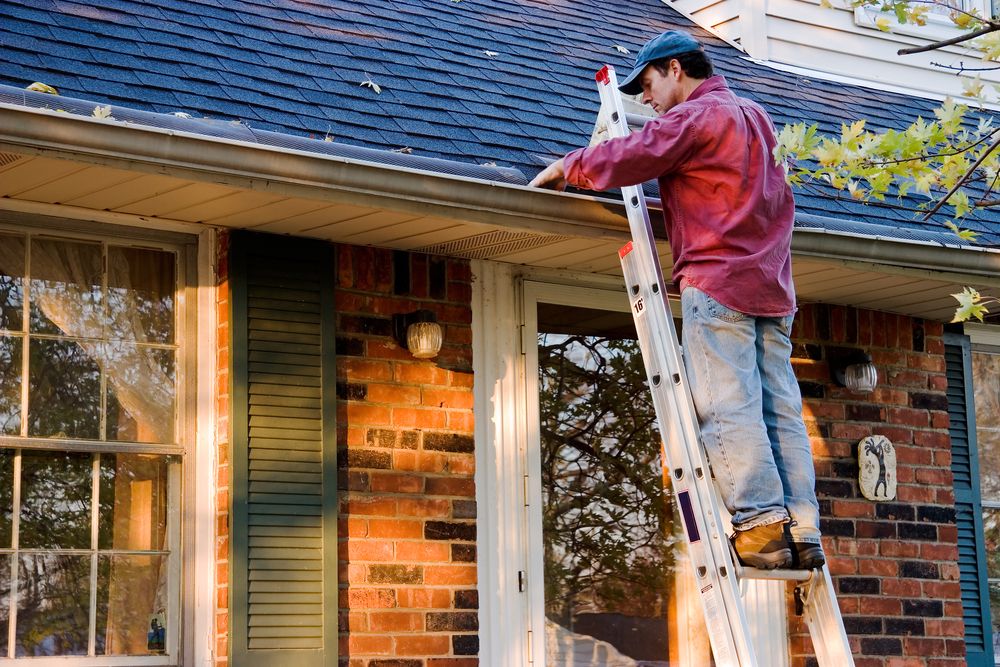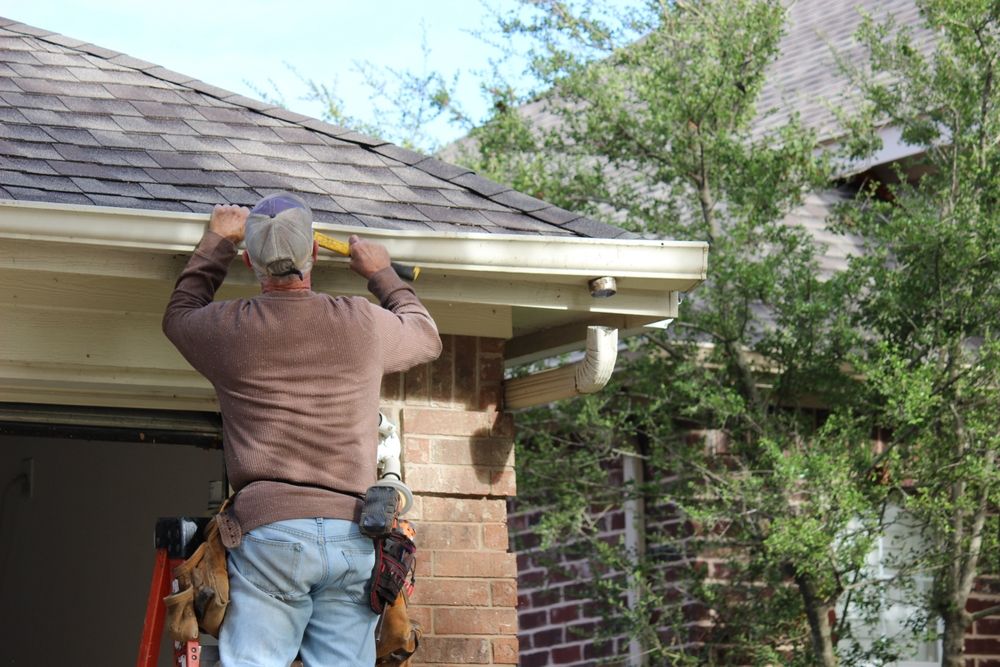When it comes to home maintenance, gutters are often overlooked—until clogged debris or leaks cause noticeable problems. Yet, well-maintained gutters are a critical line of defense against water damage. By directing rain and melted snow away from your foundation and walls, they help prevent mold, rot, and soil erosion around your property. Whether you’re a new homeowner or someone looking to shore up your current upkeep routine, understanding how gutters work and how to care for them properly can save you thousands in repairs and keep your home looking sharp. This guide breaks down the fundamentals of gutter care, from essential cleaning tips to choosing long-lasting materials, ensuring your home’s drainage system remains in top shape year-round.
1. Why Gutters Matter
Why It’s Important
A gutter system catches water flowing off your roof and channels it via downspouts to a safe drainage area—be that a storm drain, a slope away from the house, or a rain barrel for re-use. Without functional gutters, water can pool on or near your foundation, seep into the basement, and eventually cause structural or cosmetic damage.
Key Roles
- Foundation Protection: Excess water around the base of a home leads to cracks, which can undermine structural integrity.
- Soil Erosion Control: Directing water to safe runoff points preserves landscaping and prevents deep grooves or puddling near the house.
- Siding and Roof Preservation: Proper drainage reduces the risk of rotting fascia boards, mold along siding, and leaks that could infiltrate attic spaces.
Takeaway
Investing a bit of time or money into gutters pays dividends in preventing water-related headaches down the road.
2. Common Gutter Materials
Why It Matters
Gutters come in various materials, each offering unique pros and cons regarding durability, aesthetics, and cost. Knowing these helps match your budget and local weather demands.
Popular Materials
- Aluminum
- Pros: Lightweight, rust-resistant, generally cost-effective, available in seamless options.
- Cons: Can be dented if impacted by heavy debris or ladders.
- Best For: Most residential applications, balancing affordability and longevity.
- Vinyl
- Pros: Very affordable, easy to install (often DIY), won’t rust.
- Cons: Less durable, can crack in cold climates, may sag over time if not supported well.
- Best For: Budget-limited homeowners or mild climates with less severe weather.
- Steel (Galvanized or Stainless)
- Pros: Very strong, can handle heavy snow loads or debris.
- Cons: Prone to rust eventually (galvanized), heavier, often costlier.
- Best For: Homes in areas with extreme snow or hail if budget allows.
- Copper
- Pros: Premium look, extremely long-lasting, rust-resistant.
- Cons: Very expensive, forms a patina over time (some love this aesthetic, others don’t).
- Best For: High-end or historic houses seeking an elegant finish.
Takeaway
Aluminum remains the most popular choice for durability vs. cost. If your region has harsh winters, consider heavier-gauge aluminum or steel. For curb appeal or unique architecture, copper is a timeless (if costly) option.
3. Regular Gutter Cleaning: How and When
Why It Matters
Leaves, twigs, and other debris commonly clog gutters, preventing water flow and leading to overflow or pooling. Regular cleaning is the simplest preventive measure to keep the system functional.
Cleaning Basics
- Frequency: At least twice a year (spring and fall). More often if trees overhang your roof. In rainy or storm-prone areas, check more frequently.
- Tools: A stable ladder, work gloves, a small trowel or scoop, and a bucket or tarp for collected debris. Some prefer a leaf blower attachment for gutters (using caution).
- Safety First: Ensure someone stabilizes the ladder, or use a ladder with arms that hook over the gutter. Eye protection is wise, as decomposed leaves and dirt can splatter.
- Don’t Forget Downspouts: Flush them with a hose to dislodge blockages. If water doesn’t flow freely, insert a plumber’s snake or a specialized downspout tool.
Takeaway
Clogged gutters negate the entire drainage system’s purpose. A routine cleaning schedule—especially if your yard has numerous shedding trees—keeps water flowing properly.

4. Spotting and Repairing Damages
Why It Matters
Gutters face stress from weather, debris weight, and normal aging. Over time, they can develop leaks, sagging sections, or loose fasteners. Prompt fixes stop minor issues from snowballing into major home damage.
Common Problems
- Leaks or Holes: Usually at seams or corroded spots. Sealing with gutter sealant or patch kits can fix small holes.
- Sagging or Pulling Away: Often the result of loose hangers or too much debris weight. Tighten or replace brackets/hangers.
- Improper Slope: Gutters need slight tilt (about 1/4 inch slope per 10 feet) toward downspouts. Water pooling indicates slope issues, requiring re-hanging or adjustment.
- Downspout Disconnection: If downspouts become detached from gutters or the side of your house, re-securing them with brackets ensures continued direct flow of water away from the foundation.
Takeaway
During cleaning or after storms, inspect gutters for cracks, rust, and alignment. Prompt minor repairs keep the system healthy and cost-effective.
5. Considering Gutter Accessories
Why It Matters
Various gutter add-ons or protective solutions can reduce cleaning frequency and bolster system performance. Selecting worthwhile accessories can reduce maintenance woes.
Options
- Gutter Guards (Screens, Mesh, or Covers): Keep large debris out—like leaves or twigs—minimizing clogs. However, they can still require occasional rinsing.
- Downspout Extensions: Direct water further away from your home’s foundation—helpful if your property is flat or prone to pooling near the house.
- Splash Blocks: Placed under downspouts to channel water outward, preventing erosion.
- Heated Cables: In cold, snowy climates, heated cables can prevent ice dams from forming in gutters.
Takeaway
If leaf buildup is a continual headache, gutter guards can save labor. For those in icy regions, heated cables might be worth the investment. Decide based on your yard’s tree coverage or winter conditions.
6. Professional Help vs. DIY
Why It Matters
While many homeowners handle gutter cleaning or minor repairs themselves, certain circumstances—like high multi-story homes or comprehensive damage—might require professional expertise. Balancing cost, time, and safety is crucial.
Factors
- Height and Complexity: If your roofline is multiple stories or the gutter layout is complicated, a professional’s specialized ladders or harnesses may be safer.
- Repairs or Replacement: For major sagging, hail damage, or installing new seamless gutters, professional installers ensure correct slope and sealing.
- Regular Cleaning Services: In heavily wooded yards, scheduling semiannual or quarterly professional cleaning might be simpler than climbing a ladder repeatedly.
Takeaway
Consider your comfort with heights, the extent of work, and potential time constraints. While DIY can save money, bigger tasks or safety concerns might justify hiring a gutter specialist.
Keeping gutters in proper condition is essential to preserving your home’s structural integrity and exterior appearance. By choosing a suitable gutter material—be it affordable aluminum, robust steel, or elegant copper—you can align durability with aesthetics and budget. However, no matter the material, routine cleaning (often twice a year) is crucial to prevent debris from piling up and causing clogs, leaks, or sagging. Timely minor repairs—like sealing small leaks or adjusting gutter slopes—stop water from pooling near your foundation or walls.
If you often wrestle with large volumes of leaves, consider gutter guards to reduce hassle. And if your property requires more frequent or extensive maintenance, a professional gutter cleaning service can handle tricky rooftops or multi-story homes safely. Whether you do it yourself or outsource, paying attention to proper gutter care spares you from expensive water damage, mold growth, or landscaping woes. Ultimately, well-kept gutters direct rainwater exactly where you want it—away from your home—so your property can remain sturdy, dry, and beautiful for years to come.





